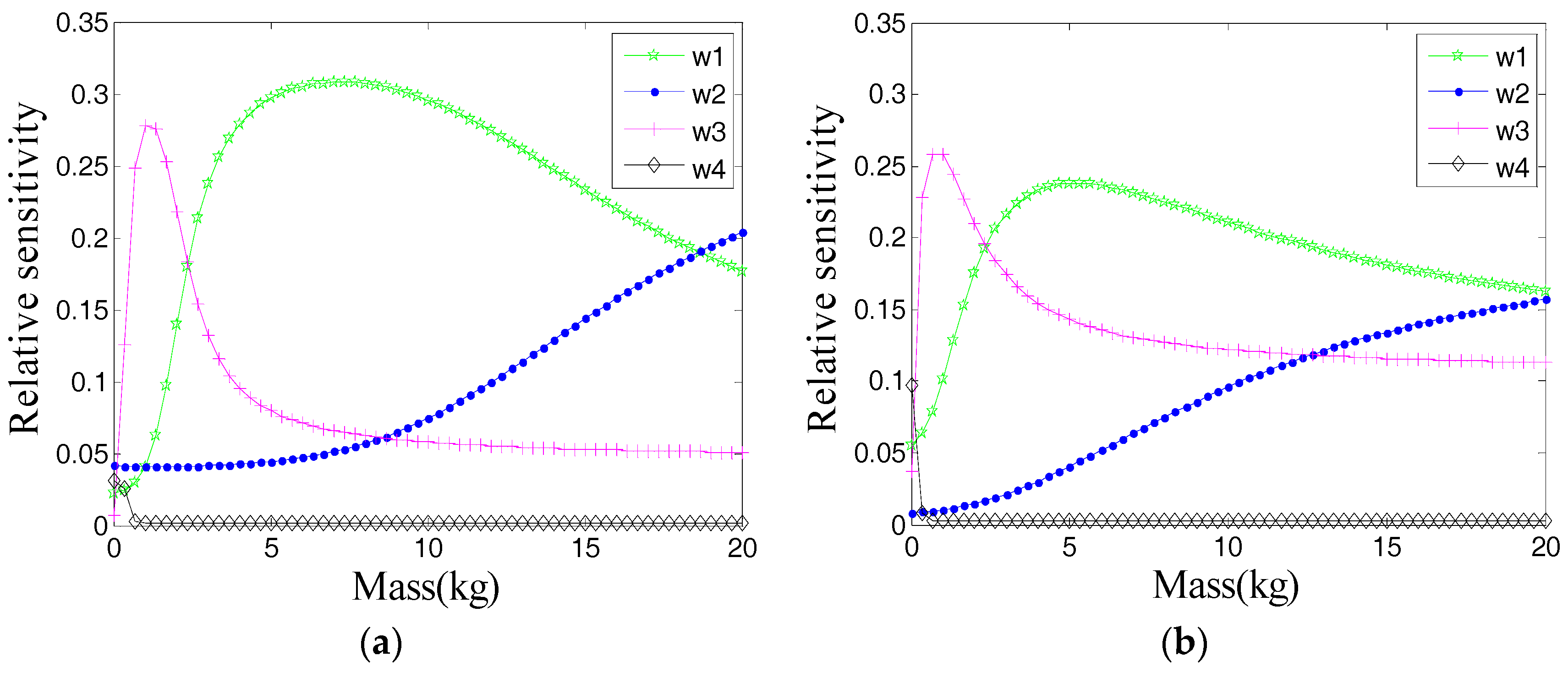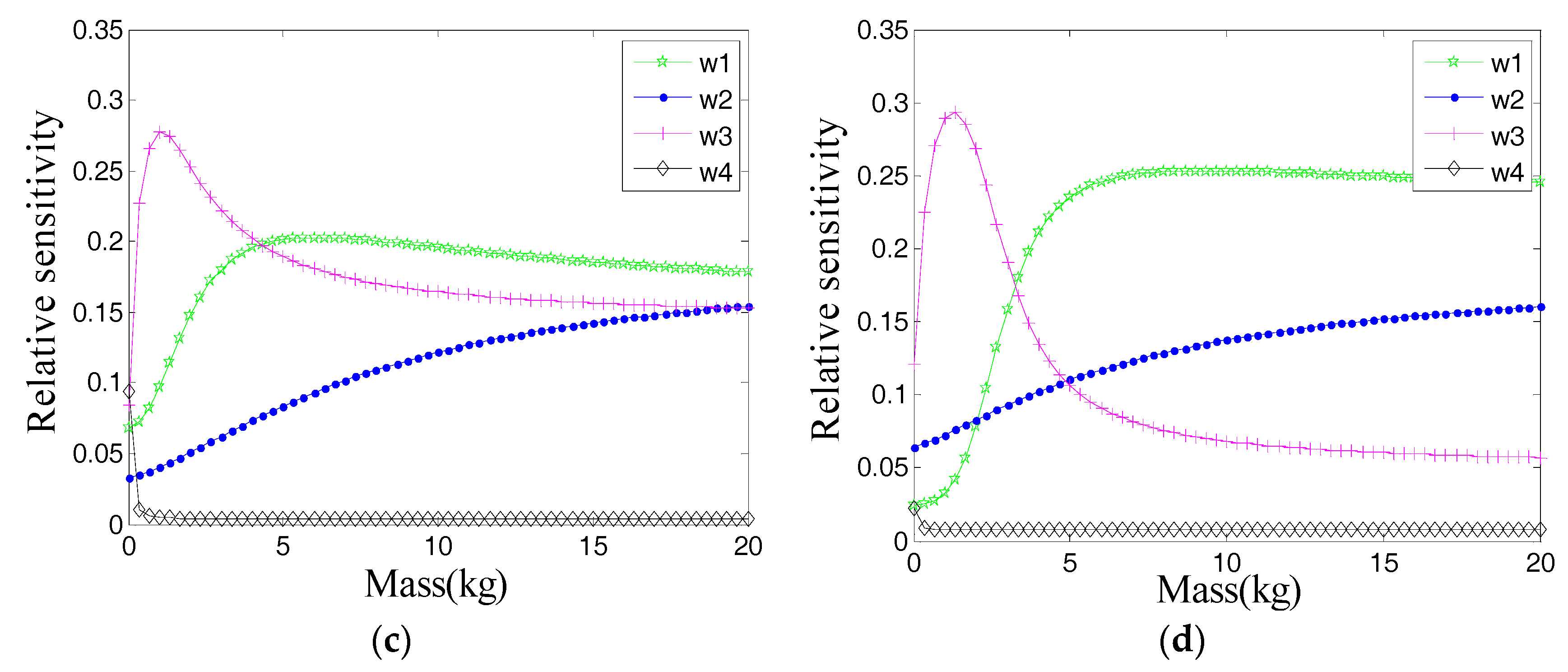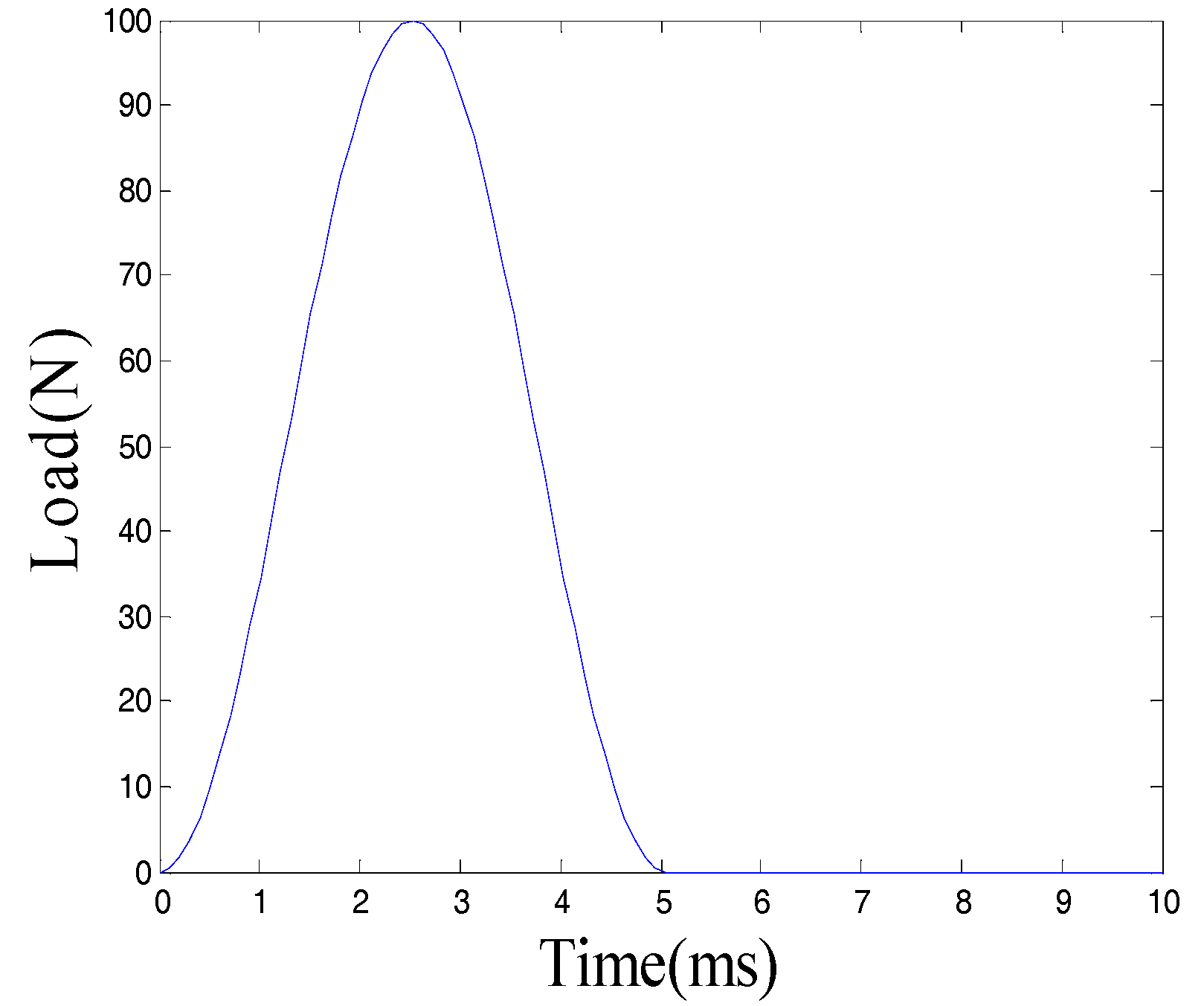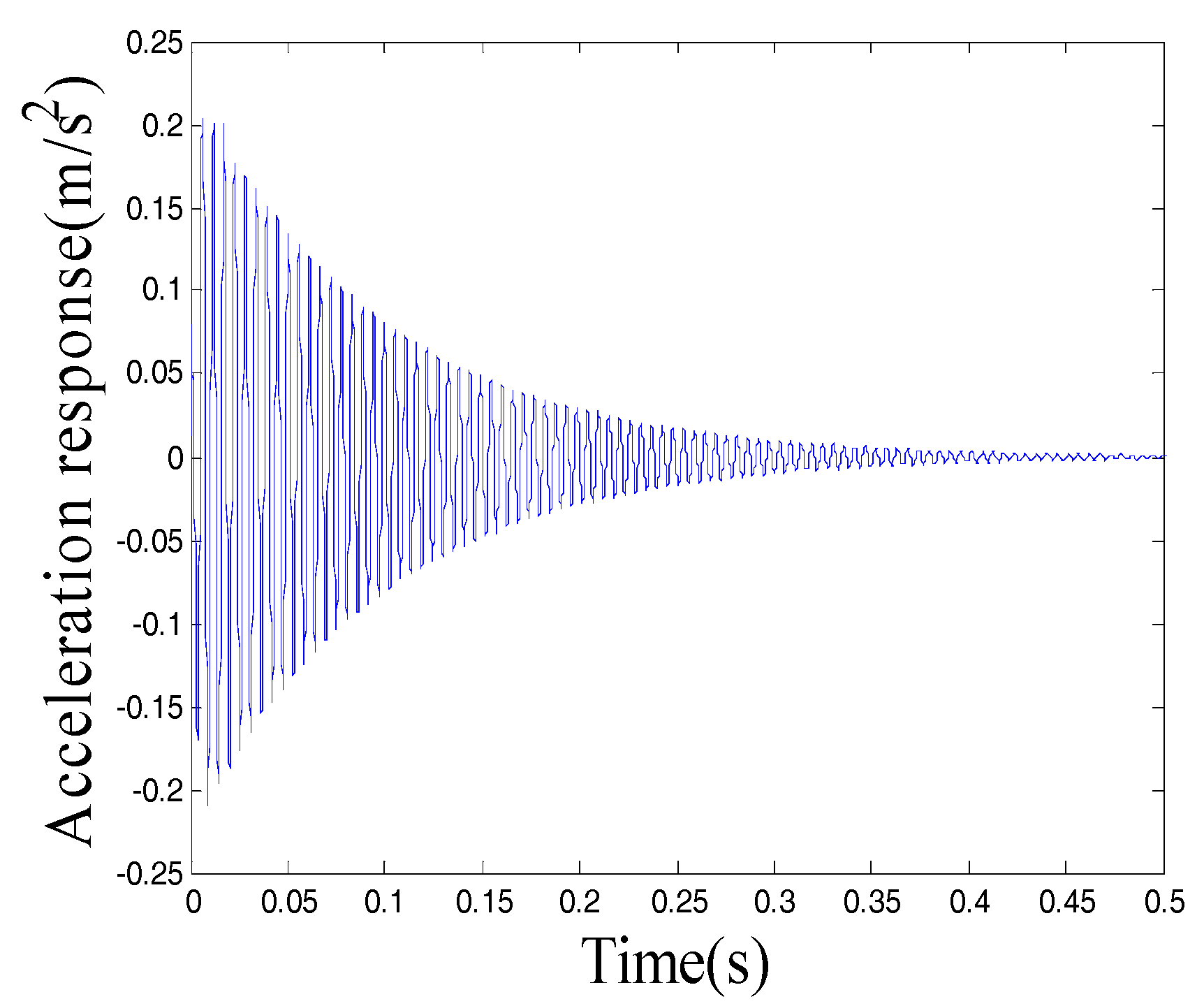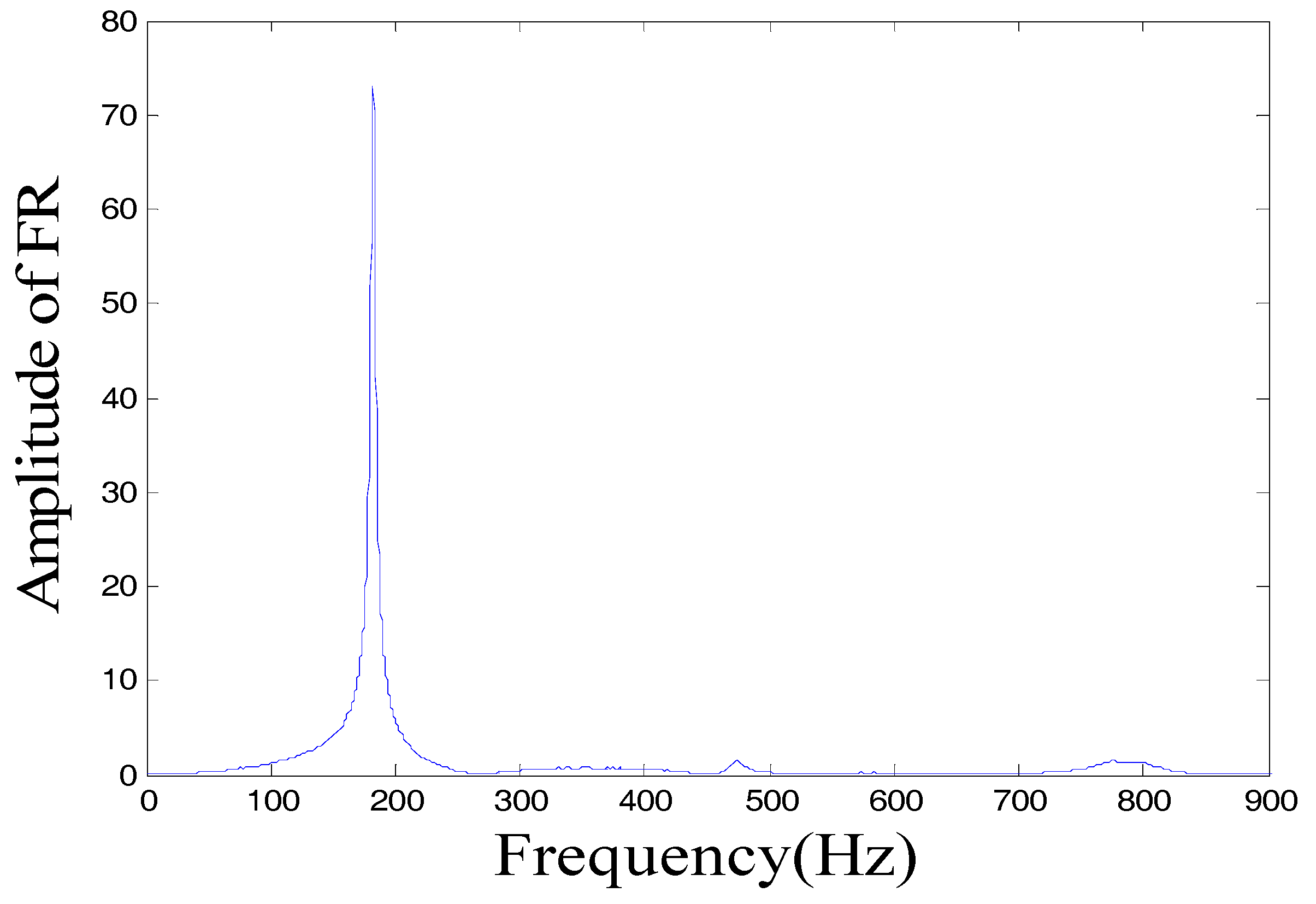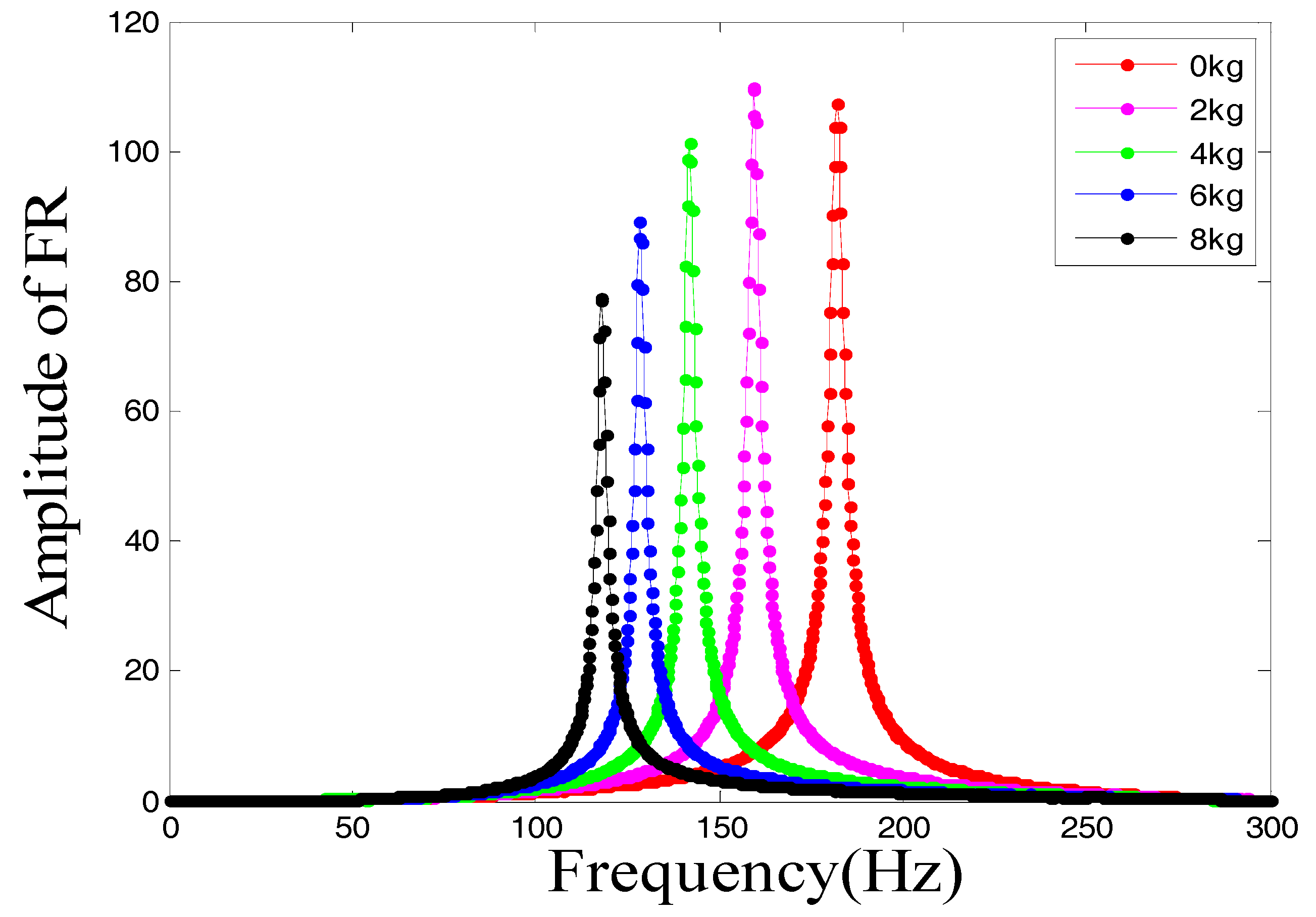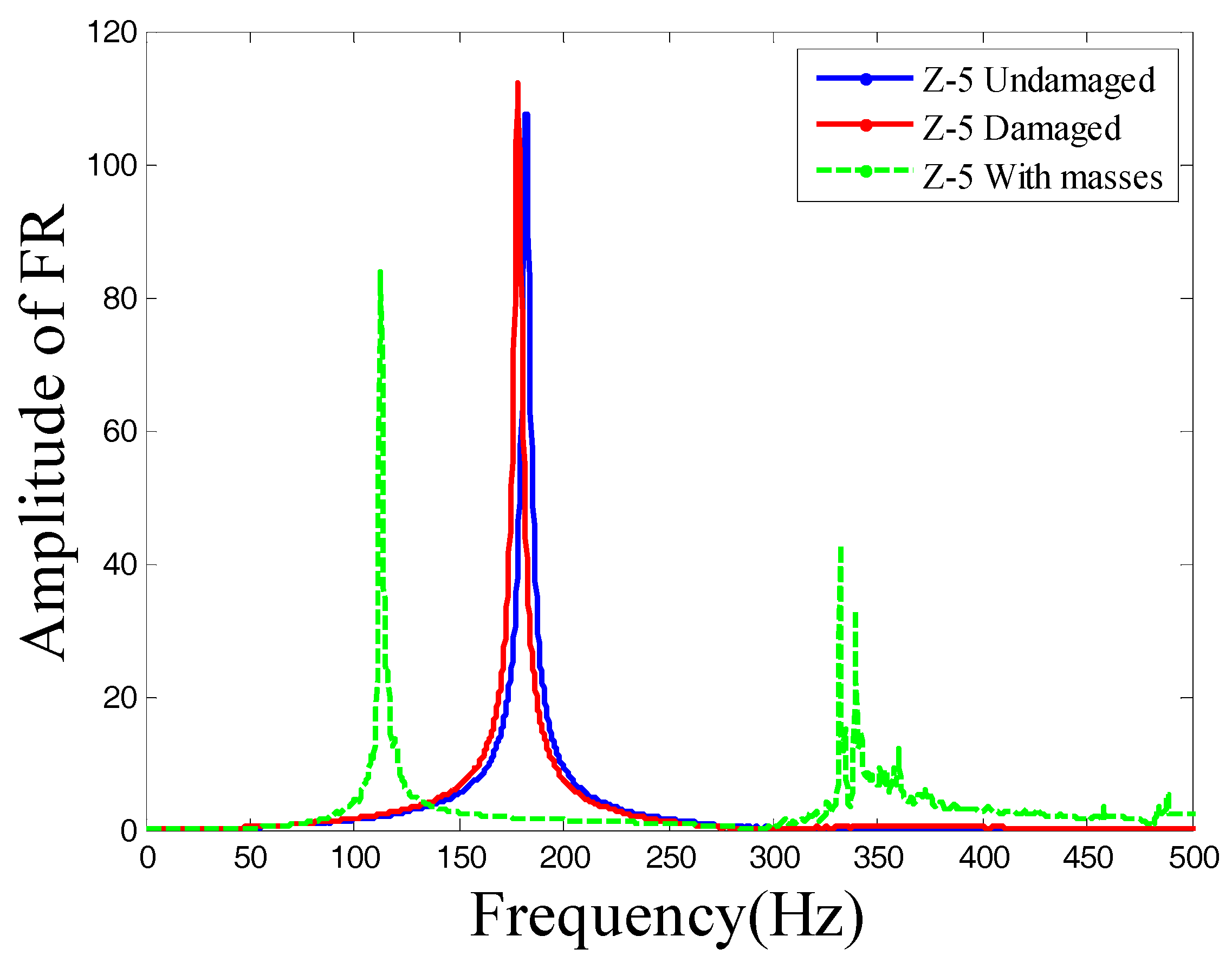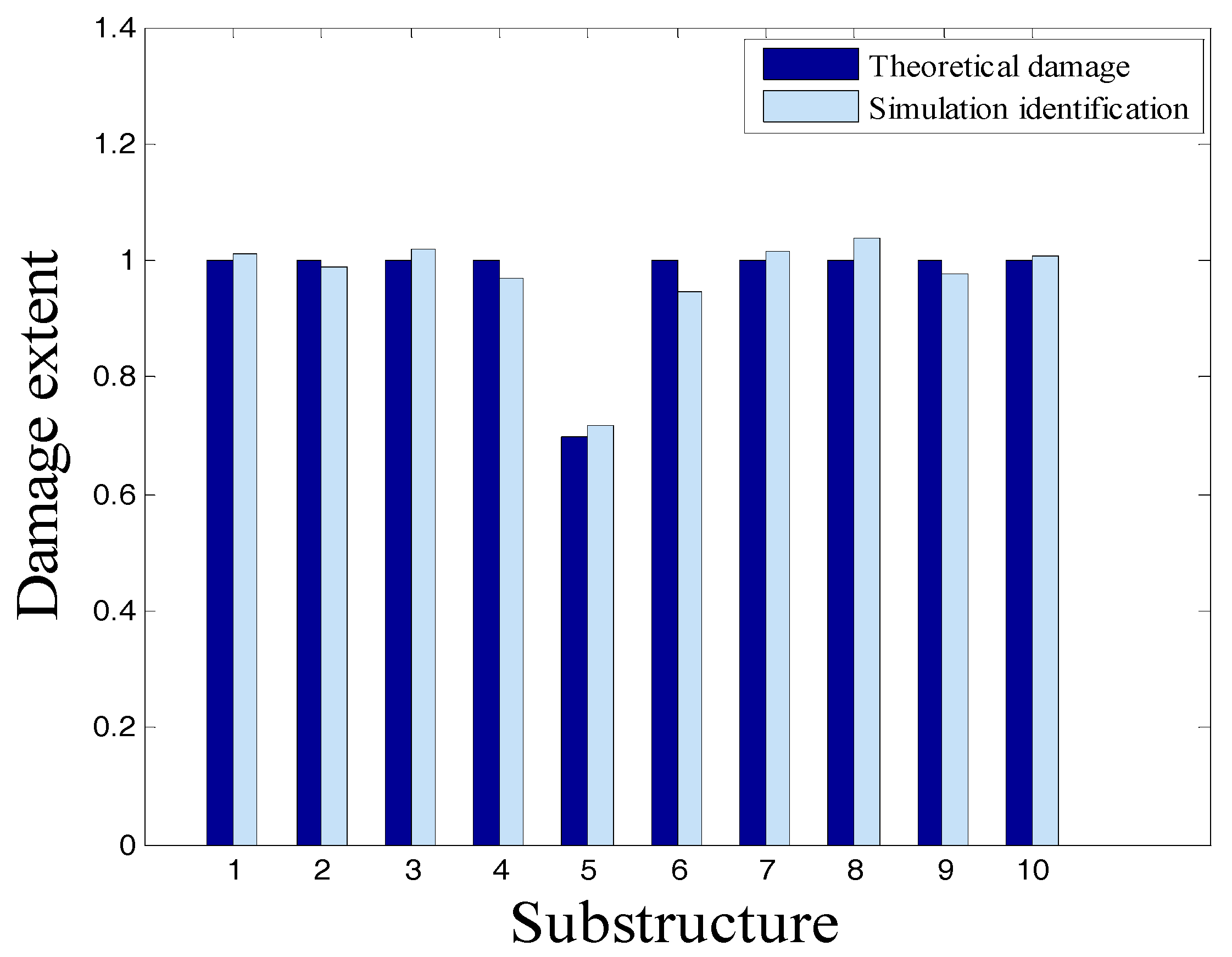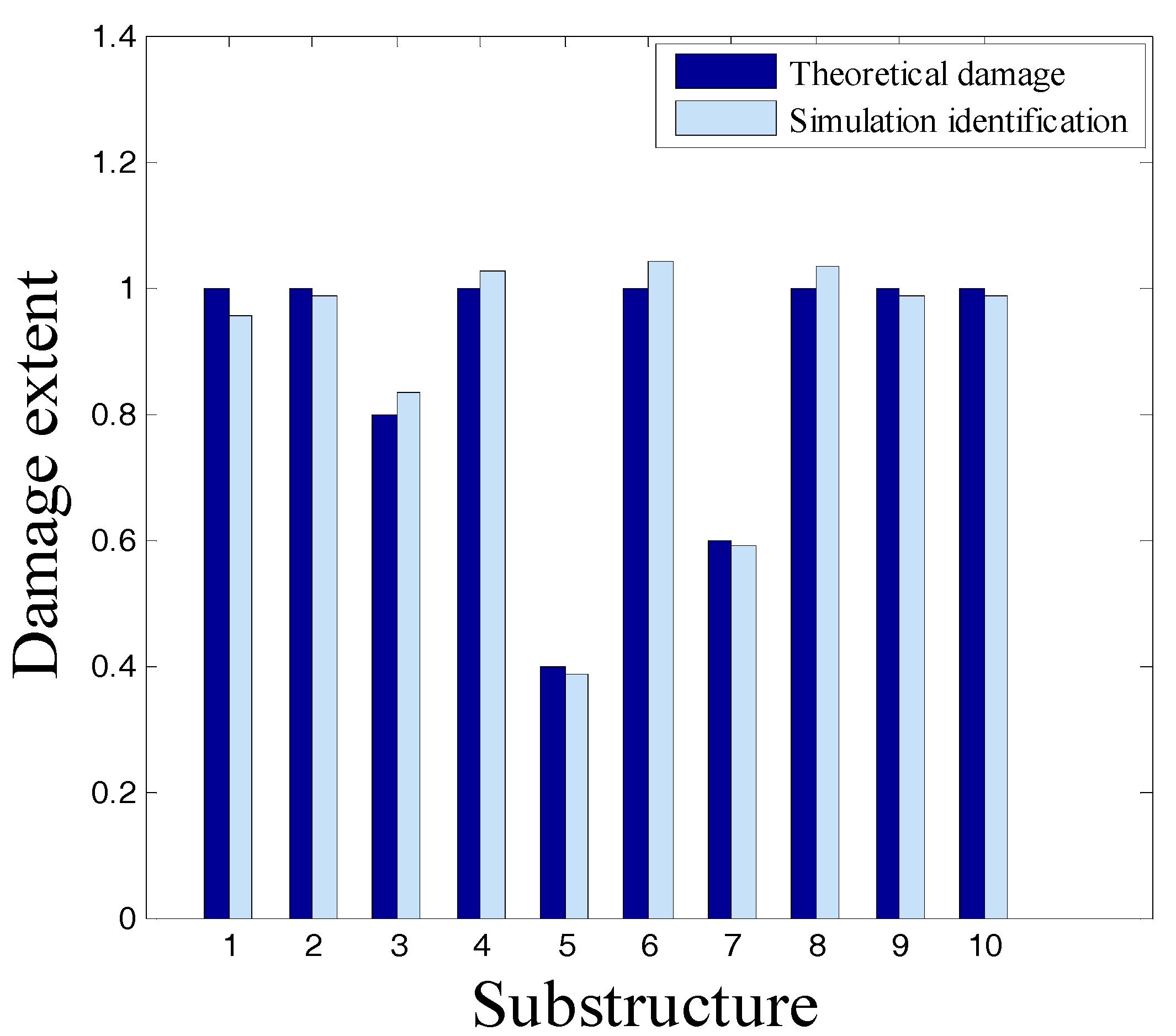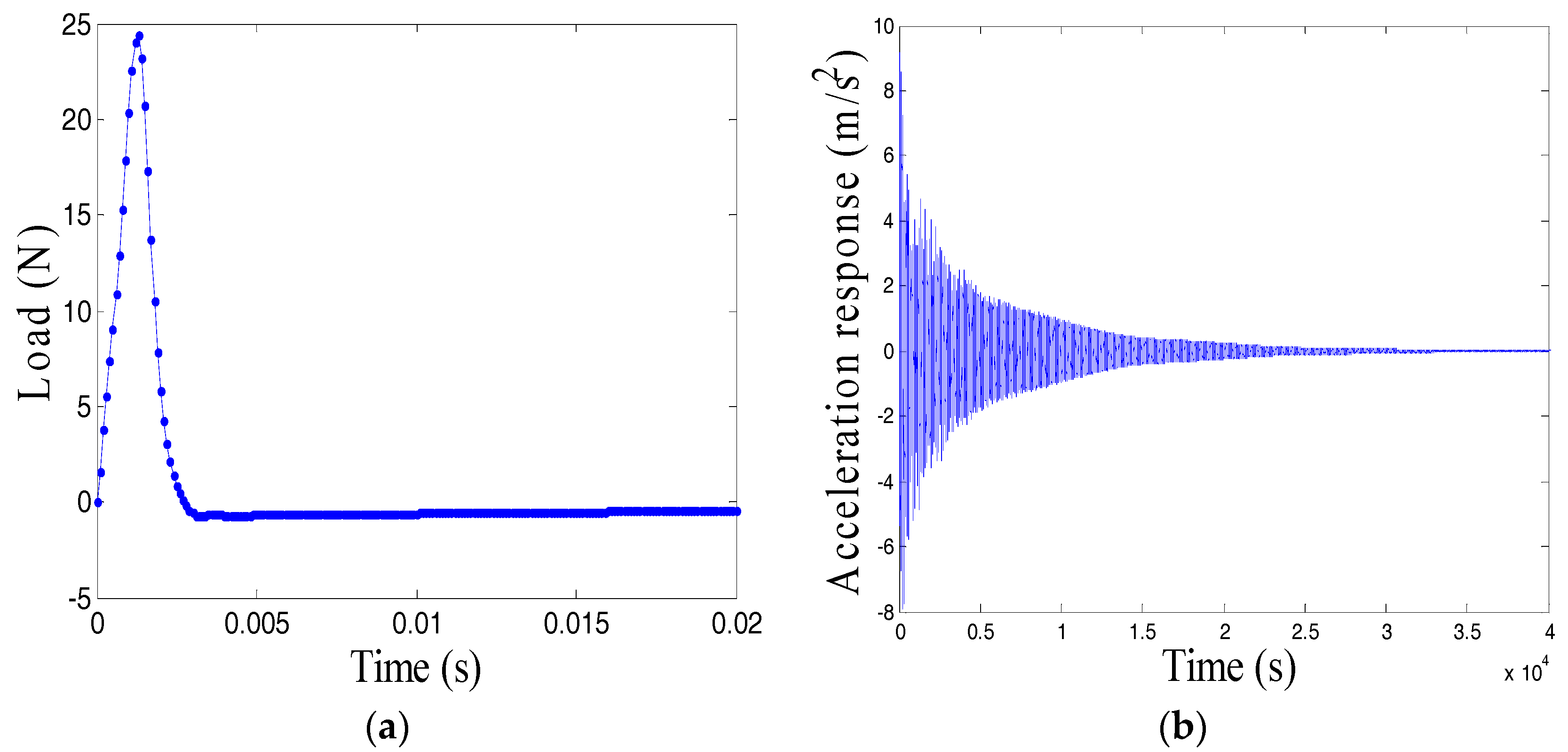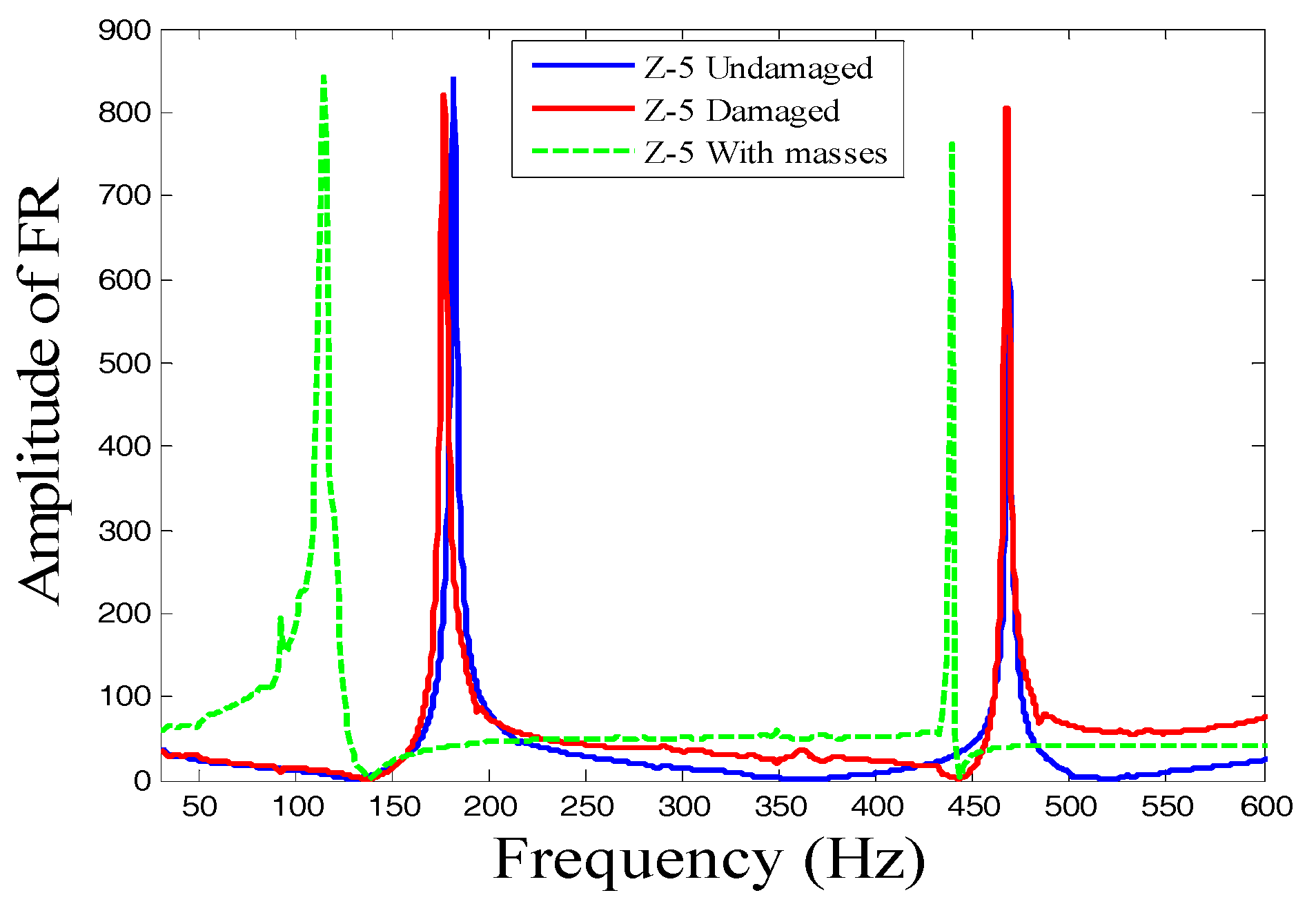1. Introduction
Pipelines usually transport flammable, explosive, toxic, or corrosive media under extremely harsh environments. Therefore, long-term operation is prone to leakage or even explosion and other accidents [
1]. For this reason, implementing effective structure health monitoring (SHM) for pipelines is very important, because damage identification provides a reliable theoretical basis for the detection, early warning, and safety assessment of such structures.
Currently, pipeline health monitoring is mainly carried out by assessing the integrity of the pipeline structure, which can help in detecting various damages, occurrence, and location and in identifying the degree of damage detected. Non-destructive testing techniques, such as radiation, electromagnetism, ultrasonic guided wave, acoustic emission, and modal method, are commonly used in pipeline damage detection. Among the aforementioned methods, only the vibration model detection method is relatively simple and easy to operate, which can be utilized under environment excitation. Therefore, damage identification based on modal information is widely used in pipeline damage. Li et al. [
2] discussed a nondestructive testing technique based on the perturbation principle, in which a square change of frequency is applied to damage identification of pressure pipelines. Pandey [
3] first proposed the application of the curvature mode in damage identification. Through finite element analysis, this author studied the relationship between curvature mode and damage. Hao et al. [
4] located pipeline damage based on a curvature modal difference. Ren et al. [
5] expressed strain as a function of displacement vibration mode and used the index of the strain modal difference rate to study damage location. Modal information is the basic parameter of a structure and does not change with the incentive. However, only several low natural frequencies are estimated because obtaining higher natural frequencies is difficult [
6]. The amount of unknown parameters also becomes larger due to the complexity of structures. Hence, accurately identifying damages in the field of civil engineering is challenging. F, Khan et al. [
7] discussed the implementation and validation of an integrated structural health monitoring (ISHM). The proposed ISHM scheme used three methods: digital image correlation (DIC), acoustic emission (AE) and guided ultrasonic waves (GUW).
In terms of the current research situation, the damage identification method based on structural vibration characteristics mainly includes: the method based on structural dynamic characteristics (frequency, vibration mode, flexibility matrix, strain mode, and so on), method based on frequency response (FRF), time series method, method based on model correction, Intelligent optimization algorithm, method based on probability and statistics and the method based on damage location vector (DLV).
Adding control parameters, such as mass and stiffness, on the structure provides an effective method for damage identification by changing the shape of the structure [
8,
9,
10]. Increasing the amount of the modified structure is a good way to obtain a large number of data. However, adding mass or stiffness on structures in certain special situations is difficult. Therefore, the current paper presents a damage identification method using additional virtual masses based on the virtual distortion method (VDM). The proposed method is a rapid structural reanalysis method that employs virtual distortions or forces to simulate structural modification [
11]. Via VDM, ample modified structure frequency responses are obtained. Hence, the extent of the damage to the original structure can be accurately estimated using the data from the original and virtual structures. The method is also used for the identification of structural parameters, such as stiffness, mass, moving mass, and damping [
12,
13,
14,
15].
Using the basic concept of VDM, this paper proposes the addition of virtual masses to pipeline structures and accurately identifying damage degree with combined sensitivity and frequency. We posit that doing so evades the difficulty of attaching real masses. The method divides a pipeline structure into several substructures and increases the sensitivity of the frequency to damage by adding virtual masses to each substructure. Constructing a response after adding virtual mass is key to this method, and frequency response by adding random mass can be obtained according to the measured force and acceleration frequency responses. First, this paper introduces the basic principle of damage identification based on additional VMD. Then, numerical simulation and experimental verification are carried out on the pipeline structure, which expands the applicability of the method in different structures. In this experiment, to quantify the degree of damage in the pipeline, a certain size of the hole is made to simulate the damage. The damage represents the longitudinal split of the pipe in real life, but in order to achieve the experimental results, the simulated damage is relatively large.


